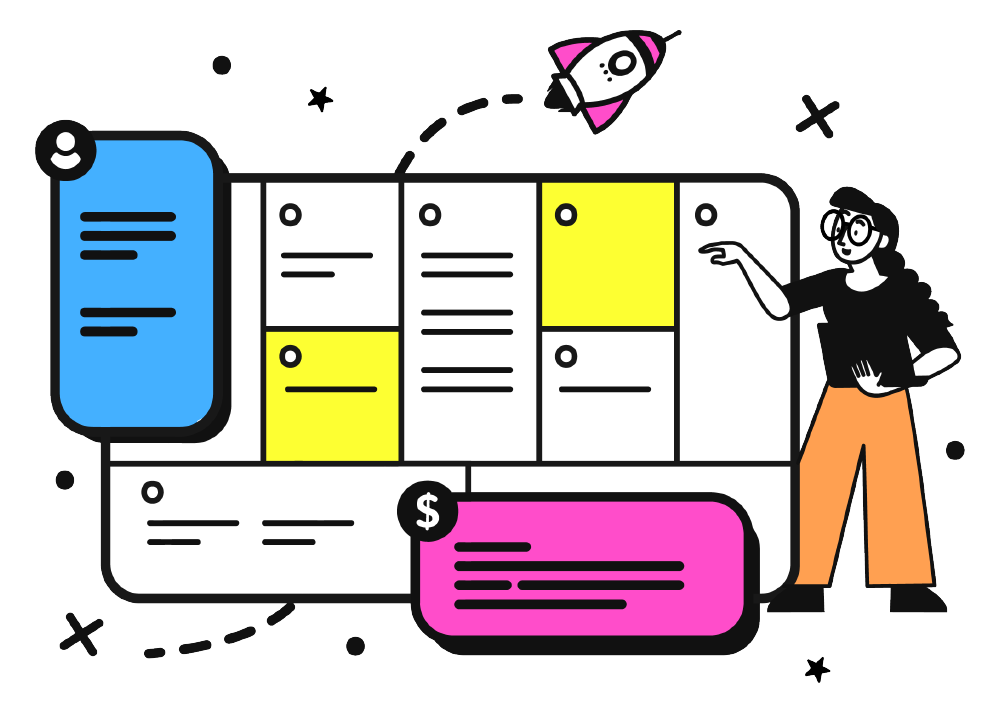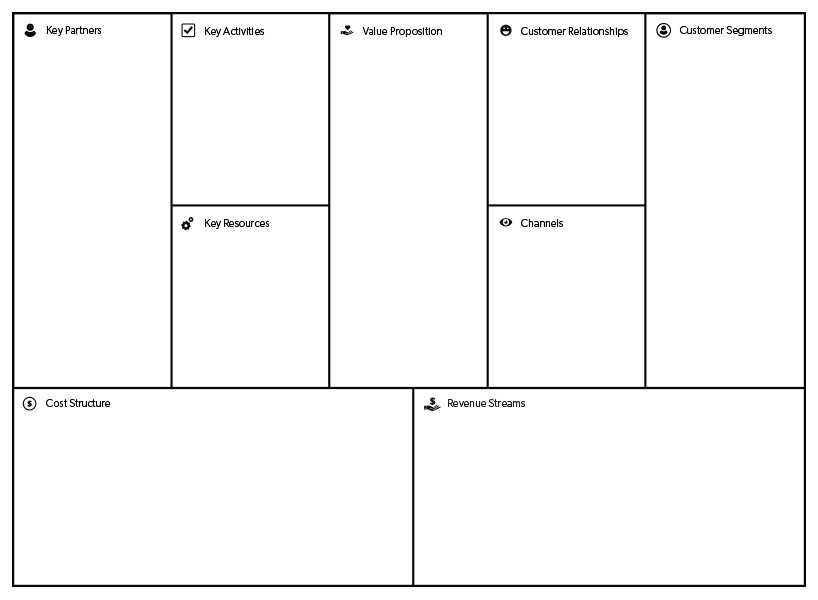Business Model Canvas Template and Guide
Define and clarify, principal activities of your brand’s product’s value proposition, infrastructure, customers, and finances.

Your Business Model Canvas
You might be wondering what a business model canvas is and why is it essential for successful business owners to use this template. Created by Alexander Osterwalder in 2005, the business model canvas is a template that breaks down your business model into nine designated sections or "building blocks." Helping business owners like yourself see their business model in a much more concise and organized way.Stop wasting time and money on ineffective, creative design, digital marketing, and website experience initiatives. Equip yourself with the necessary details you need to create with a purpose, establish, and improve your brand’s authority.
When you complete your Business Model Canvas template and guide, you will:
• Develop a framework for documenting your business strategy
• Create a comprehensive overview of your brand’s activities
• Collaborate effectively with structured discussions
• Provide clarity and direction
• Identify and address specific risk
• Reduce the risk of failure
• Improve your opportunity for success

• Value Proposition
• Channels
• Customer Relations
• Revenue Streams
• Key Resources
• Key Activities
• Key Partners
• Cost Structure
🎉 Let's Get Started
It's essential to be as honest and accurate as possible with the information you include in your Business Model Canvas. Use the free template and guide PDF to the best of your ability and answer each corresponding block of your Business Model Canvas template and guide.
FREE Business Model Canvas Template and Guide
Identify and segment your customers into various groups based on specific traits such as problem, value offer, industry. Does your value-proposition apply to a mass or niche market?
Ask Yourself
• How can you segment your customers?
• For who are you creating value?
• Who are your most important customers?
• What do your customers desire?
• What is their core problem?
• How else can you segment your customers?
You can also accomplish market segmentation based on specific traits such as geographic, demographic, psychographic, and behavioral.
Remember
Try listing your top 3-5 segments in your market. Take note that these segments could vary depending on whether your business is a B2B (Business-to-Business) or B2C (Business-to-Consumer).
Understand and detail the value you provide your customers. Your value proposition will explain to your customer why they should do business with your brand instead of your competitors.
Ask Yourself
• What value do you deliver to your customer?
• What products and services do you have to offer?
• Which of your customer’s problems do you solve?
• What value bundles of products or services do you deliver to each segment?
• How do you make your customer’s life easier, better, or both?
What customers needs do you satsify?
• Performance
• Customization
• Getting the Job Done
• Creative or Design
• Brand or Status
• Price
• Cost Reduction
• Risk Reduction
• Time
• Accessibility
• Convenience or Usability
Remember
Your customer only cares about what problem you solve for them. Focus on your value props performance, user experience, customer service, and finally, pricing. Also, consider what is unique about your value proposition that sets your business apart.
How do you plan to engage with your customer during all phases of their buying or purchasing cycle?
Ask Yourself
• Where do your customer segments prefer to be engaged?
• How do you reach your customers now?
• How are your channels integrated?
• What channels work best?
• Which are most cost-efficient?
• How are they integrated into customer routines?
Consider The Following
Awareness:
• How will people find out about your business?
• How do you raise awareness?
Ex. Advertising, Social Media, Word Of Mouth
Evaluate:
• How do you help your customers evaluate your offer?
Ex. Website, Print Collateral, Video, Trial
Purchase:
• Where and how can people make a purchase?
Ex. In-Person, Online, Other
Delivery:
• How do you deliver their product/service.
Ex. Hard Goods, Digital Resources, Consulting
Satisfaction:
• Where can they review your services?
Ex. The survey, Customer Service, Third Party Platform
After the Sale:
• How do you provide post-purchase support?
• How can you create future purchase opportunities for your customer?
Ex. Newsletter sign-ups, Social Media, Advertising
Clarify the type of relationship you want and need to establish with each of your customer segments.
Ask Yourself
• What kind of relationship do your customers expect you to maintain?
• Do you have a designated point of contact for your customers?
• What relationships have been established?
• How do you plan to maintain a relationship with your customers?
• Do you have online or digital services to help facilitate your relationship with your customers?
Examples
• Personal Assistance
• Dedicated Personal Assistance
• Self-Service
• Automated Services
• Communities
Remember
Engaging with your customer often and effectively through their experience will help you form a great relationship. Always remain aware of where they are in their buying or purchasing cycle to connect with relevant information.
Understand what value your customer segments are genuinely willing to pay and define how your brand generates revenue.
Ask Yourself
• For what value are your customers willing to pay?
• For what are they currently paying?
• How do they pay for your value prop?
• How much does each revenue stream contribute to your overall revenue?
• What are your top revenue streams?
• How has the competition positioned their pricing structure?
Examples:
Types
• Asset Sales
• Usage Fee
• Subscription Fee
• Lending / Rental / Leasing
• Licensing
• Brokerage Fees
• Advertising
Fixed Pricing
• List Price
• Product Feature Dependent
• Customer Segments Dependent
• Volume Dependent
Dynamic Pricing
• Negotiation
• Yield Management
• Real-Time-Marker
Remember
Include recurring revenue, transaction-based revenue, project revenue, or service revenue. Once you’ve identified where your money is coming from, it will be easier to understand your cost structure. Your business model can involve transactional revenues resulting from one-time customer payments or recurring revenues.
Identify and specify what you need to run and operate your brand. What is involved with executing your value proposition, customer relationships, and earn revenue.
Ask Yourself
• What or who do you need to run your business?
• What key resources does your value proposition require?
• What key resources do your
— Distribution channels require?
— Customer relationships require?
— Revenue streams require?
• What resources can you create to provide your customers with more value?
Resource Type
• Physical
• Intellectual ( brand, patents, copyrights, data )
• Human
• Financial
Remember
Include any physical assets, like buildings or equipment, the staff you have on hand, the knowledge you’ve acquired to run this business, and any means or money needed. Your essential resources can include any strategic assets that will impact and support your key activities.
Identify and specify the essential activities your brand must complete for you to operate successfully?
Ask Yourself
• What key activities does your business require for the execution of your value proposition?
• What key activities does your business require for:
– Distribution channels
– Customer Relationship
– Revenue Streams
Include operations, distribution, marketing, production, problem-solving, customer relation, administration and revenue streams.
Remember
Try reviewing your daily routine and procedures and take it step-by-step from there. Your mission is to detail all the critical tasks your brand needs to complete to deliver on its value proposition, operate efficiently, and succeed.
Identify and specify your partners. Differentiate between motives for your current partners and new partnerships.
Ask Yourself
• Who are your key partners?
• Who are your key suppliers?
• What key resources do we acquire from partners?
• What key activities do partners perform?
• What relationships do you have with your suppliers, your manufacturers, business partners, etc.?
Reasons to Partner
• Optimization and financial
• Reduction of risk and uncertainty
• Acquisition of a particular resource and activities
Remember
Business partners can be an essential part of your business. Take note of everyone who was and is involved with helping your brand exist. When selecting a business partner, understand it takes flexibility and compromise, but ultimately all parties want and are working towards the same goal.
Identify and detail the most significant costs incurred and required for operating your business.
Ask Yourself
• What are your most important costs and expenses?
• What key resources or activities are most expensive?
Types
• Fixed Cost (salaries, rents, utilities)
• Variable Cost
• Economise of scale:
Cost reductions that occur when companies increase production.
• Economise of scope:
Production of one good reduces the cost of producing another related good.
Remember
Not all cost structures will look the same but will always include an overall breakdown of your cash flow.
Is your cost structure:
• Value-driven - focused more on the value of the actual product(s)?
• Cost-driven - focused more on minimizing the costs of your product(s) or service(s)?
Your Completed Business Model Canvas Template and Guide
Your Next Steps
Now that you have the clarity and direction you need to create new offers, marketing campaigns, and creative solutions. Your next step is to determine the intensity of your industry’s competition and profitability. Clarity will empower you to develop strategies that will allow you to best position your brand within your industry and command an excellent profit. Learn More
The power to succeed in the palm of your hand.
✔️ Stay organized and on track.
✔️ Take control from anywhere.
✔️ Collaborate & manage with ease.
Learn More About Notion
